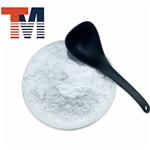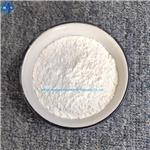- keratin
-

- $110.00/ kilogram
-
2024-01-25
- CAS:68238-35-7
- Min. Order: 1kilogram
- Purity: 99%
- Supply Ability: 10 tons/per week
- KERATIN
-

- $28.89 / 1kg
-
2023-11-27
- CAS:68238-35-7
- Min. Order: 1kg
- Purity: 99%
- Supply Ability: 10000kg
|
| | KERATIN Chemical Properties |
| density | 1.00 g/mL at 20 °C | | storage temp. | 2-8°C | | form | urea solution | | Odor | Characteristic, slight | | CAS DataBase Reference | 68238-35-7 | | EPA Substance Registry System | Keratins (68238-35-7) |
| | KERATIN Usage And Synthesis |
| Benifits for Skin | Keratins are epithelial-specific intermediate filaments and play an important cytostructural role in cells,
in addition to cell functions such as motility, proliferation, and apoptosis. They also have a protective role
for epithelial cells, helping cells contend with environmental stressors such as mechanical insults. There
are over 50 different types of keratin proteins, highly conserved across mammals. Disorders in keratin
production often results in hyperkeratosis, or thickening of SC due to trauma. Topical keratins have been
shown to reduce the degree of keratodermas. Keratin can be extracted from human hair or sheep’s wool,
and is commonly used in skin moisturizers and topical hair strengthening agents.
Many studies have been conducted to show the beneficial effects of keratin on skin renewal. Woolderived
keratin has recently been shown to stimulate keratinocyte migration as well as types IV and
VII collagen expression in fibroblasts. This shows that treatment with keratin results in rejuvenation of
the epithelium as well as strengthening of the epithelial basement membrane. A new keratin-based
hydrogel was used on a patient with epidermolysis bullosa, and resulted in improved robustness of skin
and healing.115 A randomized trial comparing 3% keratin to control showed that keratin is effective on
disturbed skin.116 Another study showed that topical keratin treatment leads to higher skin elasticity and
capacitance. Keratins conjugated to liposomes made of internal wood lipids are more effective than topical
aqueous solutions.
Studies have also been conducted on the topical application of synthetic fibronectin-like peptides.
These, like keratin, smoothed the skin surface and also reduced hyperpigmentation of the skin. | | Uses | keratin is a surface-protective agent with film-forming and moisturizing action. Keratin is often used in cosmetics for its moisture-retention and protective effect. | | Uses | Keratin from human epidermis has been used:
- as an analyte and a cross-reactant in the antibody-immobilized chip for testing selectivity coefficients
- as a standard in extracellular matrix (ECM) protein in in vitro protein degradation assays.
- asa a standard in enzyme linked immunosorbent assay (ELISA)
| | Uses | All Prestige Antibodies Powered by Atlas Antibodies are developed and validated by the Human Protein Atlas (HPA) project (www.proteinatlas.org)and as a result, are supported by the most extensive characterization in the industry.
The Human Protein Atlas project can be subdivided into three efforts: Human Tissue Atlas, Cancer Atlas, and Human Cell Atlas. The antibodies that have been generated in support of the Tissue and Cancer Atlas projects have been tested by immunohistochemistry against hundreds of normal and disease tissues and through the recent efforts of the Human Cell Atlas project, many have been characterized by immunofluorescence to map the human proteome not only at the tissue level but now at the subcellular level. These images and the collection of this vast data set can be viewed on the Human Protein Atlas (HPA) site by clicking on the Image Gallery link. To view these protocols and other useful information about Prestige Antibodies and the HPA, visit . | | Definition | A class of natural fibrous proteins occurring in vertebrate animals and humans, they are characterized by their high content of several amino acids, especially cystine, arginine, and serine. They are generally harder than the fibrous collagen group of pro | | Definition | keratin: Any of a group of fibrousproteins occurring in hair, feathers,hooves, and horns. Keratins havecoiled polypeptide chains that combineto form supercoils of severalpolypeptides linked by disulphidebonds between adjacent cysteineamino acids. | | Definition | Any of a class of fibrous
proteins found in hair, feathers,horn, and hooves. The keratins contain
polypeptide chains linked by disulfide
bonds between cystein amino acids. | | General Description | The protein encoded by this gene is a member of the cyclin-dependent protein kinase (CDK) family. CDK family members are highly similar to the gene products of Saccharomyces cerevisiae cdc28, and Schizosaccharomyces pombe cdc2, and are known to be important regulators of cell cycle progression. This kinase and its regulatory subunit cyclin C are components of the RNA polymerase II holoenzyme complex, which phosphorylates the carboxy-terminal domain (CTD) of the largest subunit of RNA polymerase II. This kinase has also been shown to regulate transcription by targeting the CDK7/cyclin H subunits of the general transcription initiation factor IIH (TFIIH), thus providing a link between the ′Mediator-like′ protein complexes and the basal transcription machinery. (provided by RefSeq) | | Agricultural Uses | Fibrous proteins are generally insoluble in water and consist of long, coiled strands or flat sheets which have strength and elasticity. Keratin and collagen come in this category. Keratin is present in hair and wool. It is characterized by the high contents of several amino acids, especially cystine, arginine and serine. Keratins are generally harder than the fibrous collagen. Keratins are insoluble in organic solvents, but absorb and hold water. | | Biochem/physiol Actions | Keratins are important for the mechanical stability and integrity of epithelial cells and tissues. Some keratins also have regulatory functions and are involved in intracellular signaling pathways, e.g. protection from stress, wound healing, and apoptosis. This diverse group of cytoskeletal scaffolding proteins form intermediate filament networks which provide structural support to keratinocytes that maintain the integrity of the skin. Expression of keratin genes is usually regulated by differentiation of the epidermal cells within the stratifying squamous epithelium. |
| | KERATIN Preparation Products And Raw materials |
|